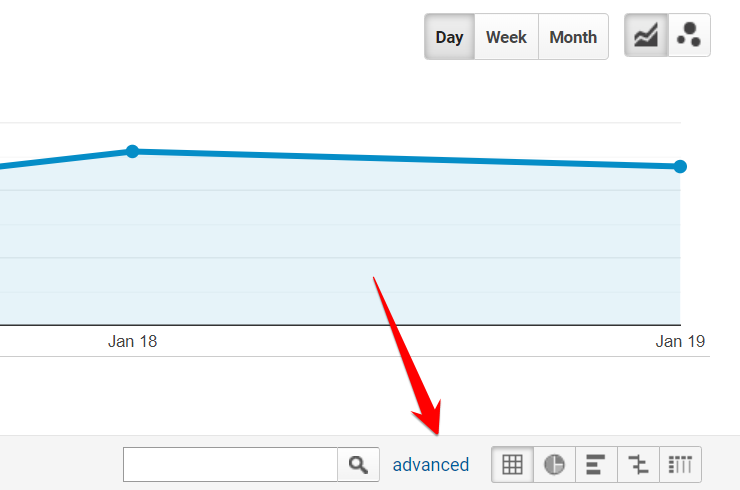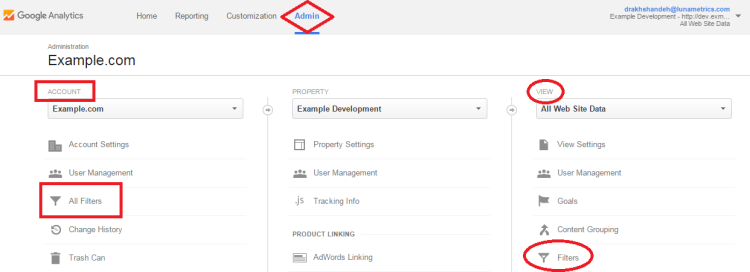The Single Strategy To Use For In Which Order Does Google Analytics Filter Data
How In Which Order Does Google Analytics Filter Data can Save You Time, Stress, and Money.
Table of ContentsThe Only Guide to In Which Order Does Google Analytics Filter DataOur In Which Order Does Google Analytics Filter Data DiariesGetting My In Which Order Does Google Analytics Filter Data To WorkThe Best Strategy To Use For In Which Order Does Google Analytics Filter Data
Take care of permissionIn this article, we review the advantages of Filters and just how to produce them to solve some typical problems. Filters interact with Views, to isolate a part of your data. Note that, below, the term "Filter" is short-hand for "Sight Filter," which ought to not be puzzled with the filters that can be contributed to customized reports.
They are applied throughout data collection for a Sight so that the unwanted data never ever obtains stored in that Sight. Advanced Segments, on the other hand, work with records as well as restrict the data shown in a particular report.
Usage Filters when you require a Sight where all the records show only the filteringed system information. One advantage of utilizing Filters (instead of Sections) is information protection. Sometimes, you wish to give accessibility to some, however not all, of your analytics data. Expect you want to give the editorial group accessibility to analytics reports regarding the company blog, yet restrict access to information from the remainder of the site (e.
The Definitive Guide to In Which Order Does Google Analytics Filter Data
In this circumstance, you would certainly create a "Blog Just" View by using a Filter that limits data to only Blog site Pageviews. You can typically accomplish the same results in your reports by applying Sectors.
It is also easier for individuals, that might not be entirely fluent in Google Analytics, to just inform them to take a look at a specific Filtered View, instead of teaching them exactly how to work with Sectors. Keep in mind that Filters and Sectors do not generate precisely the very same results. To recognize the distinctions, I recommend checking out The crucial difference between sectors and filters post by Analytics Canvas.
By always contending least one unfiltered Sight, you know that you are covered. To create a Filter, open up the Admin area, select the View you desire to filter, pick "Filters," and click "+ New Filter (In Which Order Does Google Analytics Filter Data)." You will certainly then be provided with a configuration display for establishing your Filter

All About In Which Order Does Google Analytics Filter Data
When you first create a Filter, you need to attempt it out on an examination Sight. By doing this, if you make a mistake, you will certainly not corrupt the data in one of your existing Views. Since you understand just how to produce a Filter, lets take an appearance at several of the more valuable kinds of Filters you might intend to utilize to evaluate your site.
The example above jobs just if your internal traffic comes from fixed IP addresses i. e., the address (or range) does not transform. If your workers log in from residence, or on the roadway, then chances are their web traffic is coming from dynamic IP addresses, as well as there is no means to understand in advancement where they are coming from and filter them out utilizing an IP address.
You might desire to have a Sight that includes just blog web traffic. Below official website is the Filter that we make use of to create our "Megalytic Blog Site Only" Sight. In this situation, we are able to utilize the "Predefined filter" alternative and simply specify the blog site directory for addition. All hits from brows through to page courses that do not begin with "/ blog/" will certainly be removed of this View.
We have a View that reveals just website traffic from logged in Customers. We utilize this View to analyze the actions of people that are utilizing the Megalytic product, as opposed to surfing the site or reviewing the blog.
Rumored Buzz on In Which Order Does Google Analytics Filter Data
Once the personalized dimension is established and monitoring, you can produce a View Filter to consist of just Procedure where that customized measurement has actually been established. At Megalytic, we use a custom-made measurement named "Individual, Id" to identify Individuals who have actually produced Megalytic accounts. Below is what our Filter definition appears like.

You ought to never add any type of filters to this sight. This view would certainly be the one you make use of for reporting on a routine basis. Call it whatever you like, but see to it it's connected to your team which check out ought to be made use of for reporting. Use your filters to this "Test View" initially.
